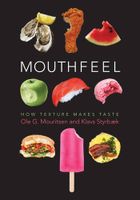Advertisement
Pureeing
Appears in
By Ole Mouritsen and Klavs Styrbæk
Published 2017
Making a puree with a smooth mouthfeel from plant materials is a question of reducing the ingredients to particles that are so small that their mouthfeel is fundamentally altered. This is most easily done with a blender or an electric grinder. Adding a little oil or other fat will enhance the softness of the puree.
Because some plants have very hard parts, it can be difficult to reduce them to a fine puree. But a granular texture, similar to that of hummus, can be quite appealing. To facilitate the process, the raw ingredients should be cooked first to loosen their cell structure. Pureeing too vigorously foods that have a significant starch content can smash the grains of starch to bits, resulting in an elastic, gummy consistency. This is all too familiar from the texture of potatoes that have been mashed too aggressively. Fruits have a variety of cell structures that react differently to being mashed or pureed after cooking. The resulting textures are also affected by the pectin content of the fruit.

